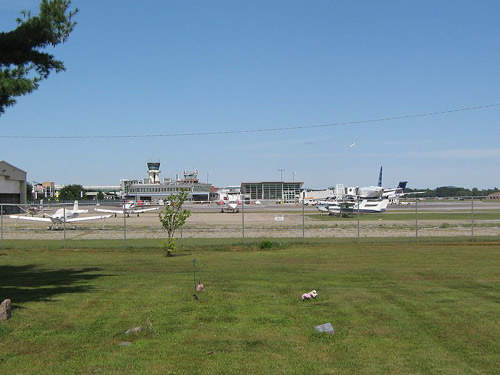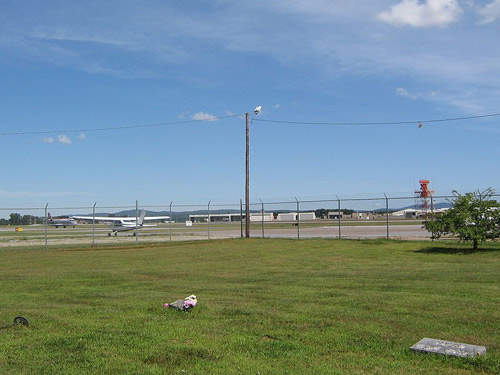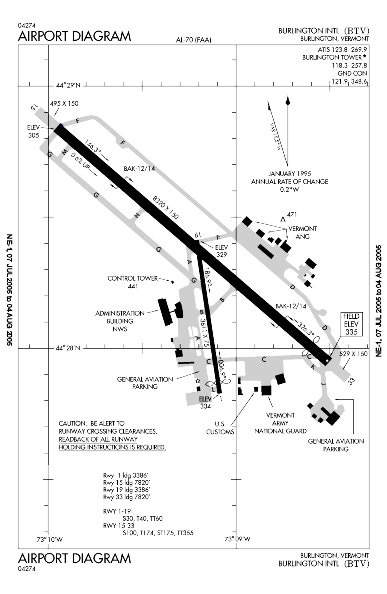Burlington International Airport is a civil-military airport located three miles east of Burlington city. Since 2000, the airport has undergone a series of renovations and expansions, to a value of approximately $24m.
In 2009, a multiphase expansion programme was undertaken to augment the airport’s cargo, aircraft maintenance and aviation capability. The expansion, to be funded by the Federal Aviation Administration (FAA), will include the upgrade of taxiways and runway, mitigation of noise through acquisition of land around the airport and installation of energy-efficient lighting.
Burlington International Airport master plan
The expansion will mainly take place at the south-end development of the airport. The south-end development programme, it will include the repavementing of the intersection between taxiways C and G. Taxiway C will be reconstructed to the west, to the intersection with runway 1/19 and taxiway G will be extended southwards where it will intersect with a new taxiway, that will be known as taxiway J. The extended taxiway G will lead to a new general aviation apron, which is nearing completion.
The airport is also equipping the taxiways with energy-saving LED fixtures. These fixtures will enable the airport to reduce the energy costs and required maintenance of its lighting system.
In addition, the airport will demolish 123 properties located within the 65db noise level contour of the airport’s. The airport will acquire the properties over ten years and install a ‘living wall’ that will act as a sound barrier between the airport and its neighbourhood.
The airport is also expanding its parking garage vertically. In 2008, the 948-space parking garage was filled to capacity almost daily between February and October. The expansion will add two levels of parking to the present structure, creating 1,400 additional parking spaces at the airport. A green roof, which will be fitted with solar panels and a garden area, will also be constructed as part of the expansion. The expansion will be completed in phases and will cost $45m.
Expansion finance
The Burlington Airport expansion will be funded entirely by the FAA. In September 2009, the FAA granted the airport $12.75m, of which $7m has been directed towards the south-end development. The airport will use $5.2m for purchasing the land around the airport for development purposes and implementation of noise mitigating projects.
The remaining funds, equivalent to $549,000, will be used to upgrade the taxiways and runways lighting systems.
Airport facilities
The airport spreads over an area of 942 acres. It features two runways of asphalt construction. The first runway in the direction 15/33, runs 8,320ft in length and 150ft in width. The second 1/19 runway extends 3,611ft. The airport has ten gates with a total lounge area of 8,515ft². Four gates are equipped with boarding bridges.
The terminal building is on two levels. The main level has five check-in counters and two baggage claim areas, and accommodates gates five to ten. The second level contains airport management offices, conference rooms, restaurants and airport offices, including a lost property office. The terminal is connected to the north and south areas of the parking garage via two elevated sky-walks.
The airport also has two military installations – the Burlington Air National Guard Base and an army aviation support facility. The Burlington Air National Guard Base comprises the 158th Fighter Wing, a fighter unit of the US Air Force and an Air Combat Command unit of the Vermont Air National Guard.






